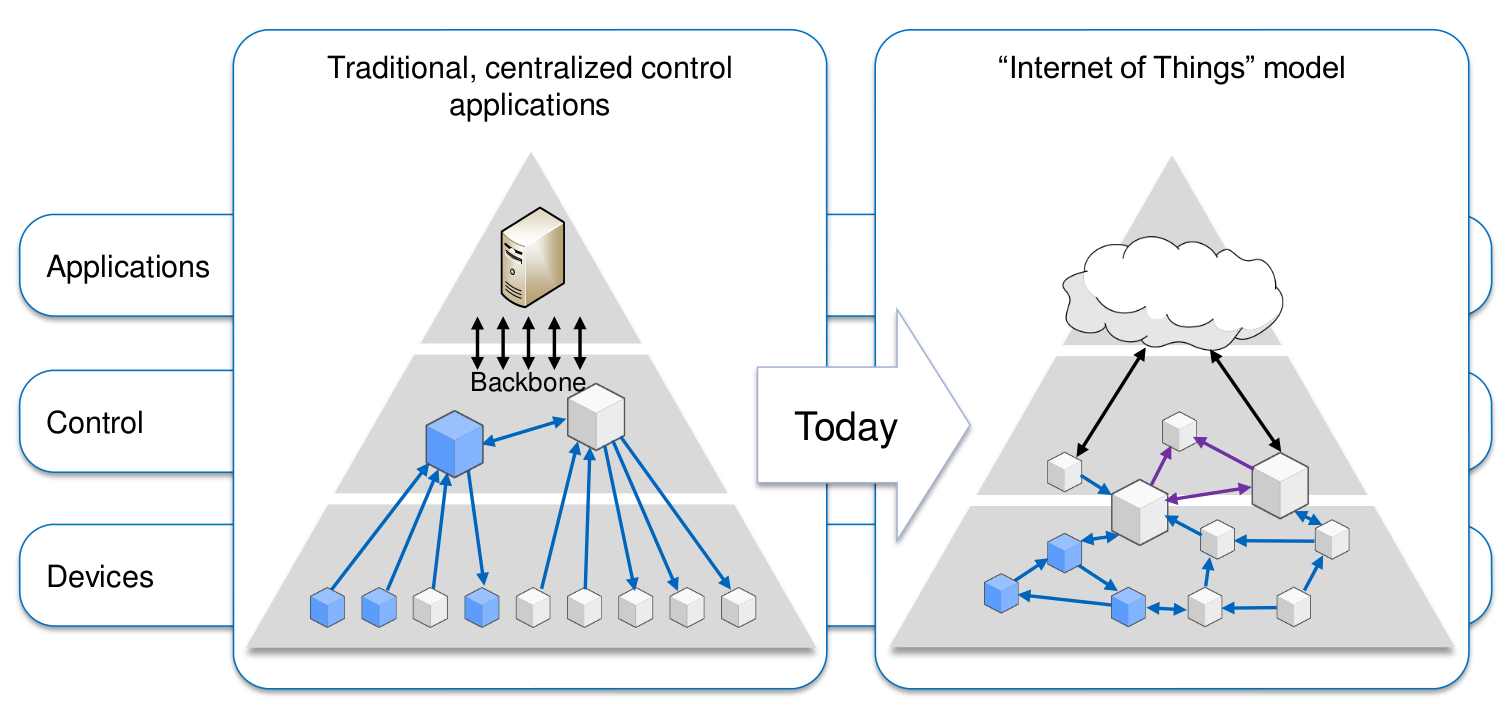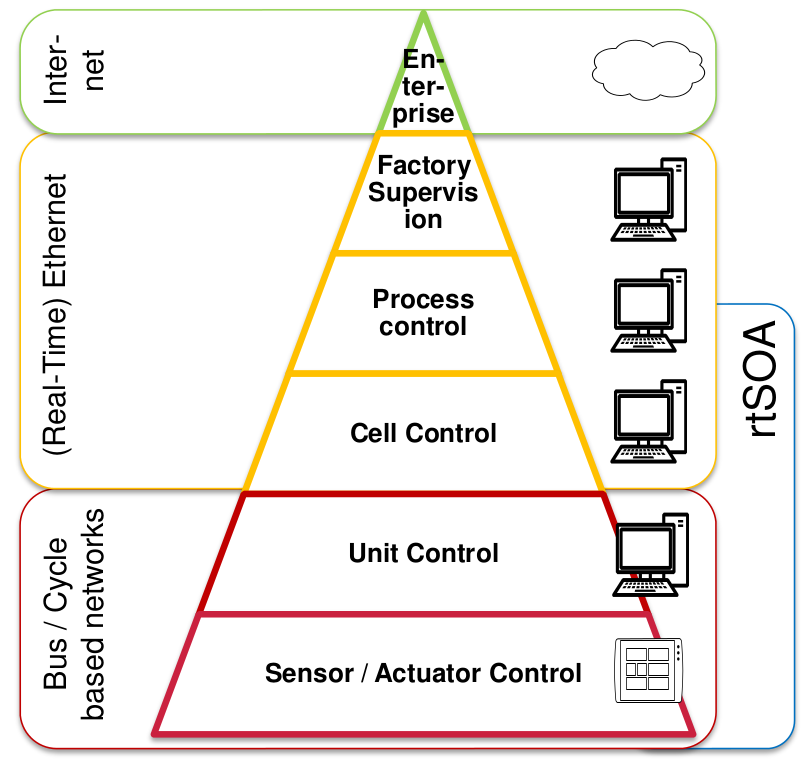rtSOA - A Data Driven, Real Time Service Oriented Architecture for Industrial Manufacturing
Projektbeschreibung
Manufacturing and industrial automation are under pressure from shortened product life-cycles and the demand for a shorter time to market in many areas. The next generation of manufacturing systems will therefore be built with flexibility and reconfiguration as a fundamental objective.

This change is eminent in the transition from traditional, centralized control applications to an interconencted, cooperative "Internet of Things" model. Strong hierarchies are broken in favor of meshed, networks and formerly passive devices are replaced with "smart objects" that are network enabled and can perform compute operations.

The software side has to match and leverage the changes in the hardware. Service Oriented Architectures (SOAs) are a well known concept from business computing to deal with flexibility and reconfiguration requirements in a loosely coupled manner. However, the common concepts of SOAs cannot be directly mapped to embedded networks and industrial control applications, because of the hard boundary conditions, such as limited resources and real-time requirements.
The
Mitarbeiter
|
|
Datensets
Im Rahmen des rtSOA-Projekts ist ein Datenset mit über 1,2 Millionen lösbaren Schedulingproblemen entstanden (s. Evaluation in unserem Papier). Dieses Datenset kann hier heruntergeladen werden (ca. 17 GB) und in PostgreSQL > 9.5 importiert werden. Dem Datenset liegt ein Importskript für Linux bei.
Publikationen
- Instant Service Choreographies for Reconfigurable Manufacturing Systems - a Demonstrator Proceedings of the 21st IEEE International Conference on Emerging Technologies and Factory Automation (ETFA’16) September 2016
- Schedule-based Service Choreographies for Real-Time Control Loops Proceedings of the 20th IEEE International Conference on Emerging Technologies and Factory Automation (ETFA’15) September 2015
- Synthesizing Schedules Through Heuristics for Hard Real-Time Workflows Proceedings of the 2015 IEEE International Conference on Industrial Technology (ICIT’15) March 2015
- Machine ballets don’t need conductors: Towards scheduling based service choreographies in a real-time SOA for industrial automation Proceedings of the 8th International Workshop on Service-Oriented Cyber-Physical Systems in Converging Networked Environments (SOCNE’14) September 2014
- Comparing Heuristics and Linear Programming Formulations for Scheduling of In-Tree Tasksets Proceedings of the 20th IEEE Real-Time and Embedded Technology and Applications Symposium (RTAS'14) April 2014